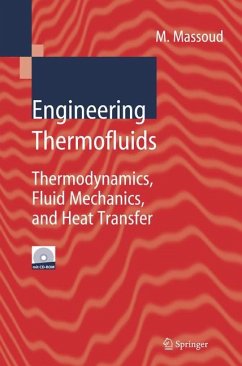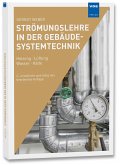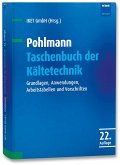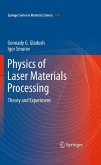The Engineering Thermofluids is a unique textbook, which brings the three pillars of thermal sciences; thermodynamics, fluid mechanics, and heat transfer under one umbrella. These three distinct, yet intertwined subjects are treated in an integrated manner. The primary audiences for this book are senior undergraduate, graduate, and practicing engineers in the fields of aeronautical, chemical industrial, mechanical, and nuclear engineering. Topics are discussed in detail while still using a simple and easy to follow approach. Numerous walk-through examples are solved and illustrations are provided to guide the reader through more subtle topics. Each chapter starts with a section for the introduction of various terminologies used. The chapter on thermodynamics covers the first law, the second law, the power cycles, and the mixture of gases. The chapter on fluid mechanics covers both steady-state and transient single phase-flow as well as two-phase flow. The chapter on heat transfer covers conduction, convection, radiation, boiling, and condensation. These chapters are followed by the chapter on applications of the engineering thermofluid, which covers the design and operations of various heat exchangers, turbomachines, and flowmeters. Many practical design problems are either solved or provided as homework. Practicing engineers will find this book a useful text to have around for the many practical problems and solutions, illustrations, definitions, methods, tables, and figures provided. The preference throughout the text is on obtaining analytical solutions of a closed form. Numerical solutions as well as experimental results are presented when analytical solutions cannot be found.
Thermofluids, while a relatively modern term, is applied to the well-established field of thermal sciences, which is comprised of various intertwined disciplines. Thus mass, momentum, and heat transfer constitute the fundamentals of th- mofluids. This book discusses thermofluids in the context of thermodynamics, single- and two-phase flow, as well as heat transfer associated with single- and two-phase flows. Traditionally, the field of thermal sciences is taught in univer- ties by requiring students to study engineering thermodynamics, fluid mechanics, and heat transfer, in that order. In graduate school, these topics are discussed at more advanced levels. In recent years, however, there have been attempts to in- grate these topics through a unified approach. This approach makes sense as thermal design of widely varied systems ranging from hair dryers to semicond- tor chips to jet engines to nuclear power plants is based on the conservation eq- tions of mass, momentum, angular momentum, energy, and the second law of thermodynamics. While integrating these topics has recently gained popularity, it is hardly a new approach. For example, Bird, Stewart, and Lightfoot in Transport Phenomena, Rohsenow and Choi in Heat, Mass, and Momentum Transfer, El- Wakil, in Nuclear Heat Transport, and Todreas and Kazimi in Nuclear Systems have pursued a similar approach. These books, however, have been designed for advanced graduate level courses. More recently, undergraduate books using an - tegral approach are appearing.
Hinweis: Dieser Artikel kann nur an eine deutsche Lieferadresse ausgeliefert werden.
Thermofluids, while a relatively modern term, is applied to the well-established field of thermal sciences, which is comprised of various intertwined disciplines. Thus mass, momentum, and heat transfer constitute the fundamentals of th- mofluids. This book discusses thermofluids in the context of thermodynamics, single- and two-phase flow, as well as heat transfer associated with single- and two-phase flows. Traditionally, the field of thermal sciences is taught in univer- ties by requiring students to study engineering thermodynamics, fluid mechanics, and heat transfer, in that order. In graduate school, these topics are discussed at more advanced levels. In recent years, however, there have been attempts to in- grate these topics through a unified approach. This approach makes sense as thermal design of widely varied systems ranging from hair dryers to semicond- tor chips to jet engines to nuclear power plants is based on the conservation eq- tions of mass, momentum, angular momentum, energy, and the second law of thermodynamics. While integrating these topics has recently gained popularity, it is hardly a new approach. For example, Bird, Stewart, and Lightfoot in Transport Phenomena, Rohsenow and Choi in Heat, Mass, and Momentum Transfer, El- Wakil, in Nuclear Heat Transport, and Todreas and Kazimi in Nuclear Systems have pursued a similar approach. These books, however, have been designed for advanced graduate level courses. More recently, undergraduate books using an - tegral approach are appearing.
Hinweis: Dieser Artikel kann nur an eine deutsche Lieferadresse ausgeliefert werden.







